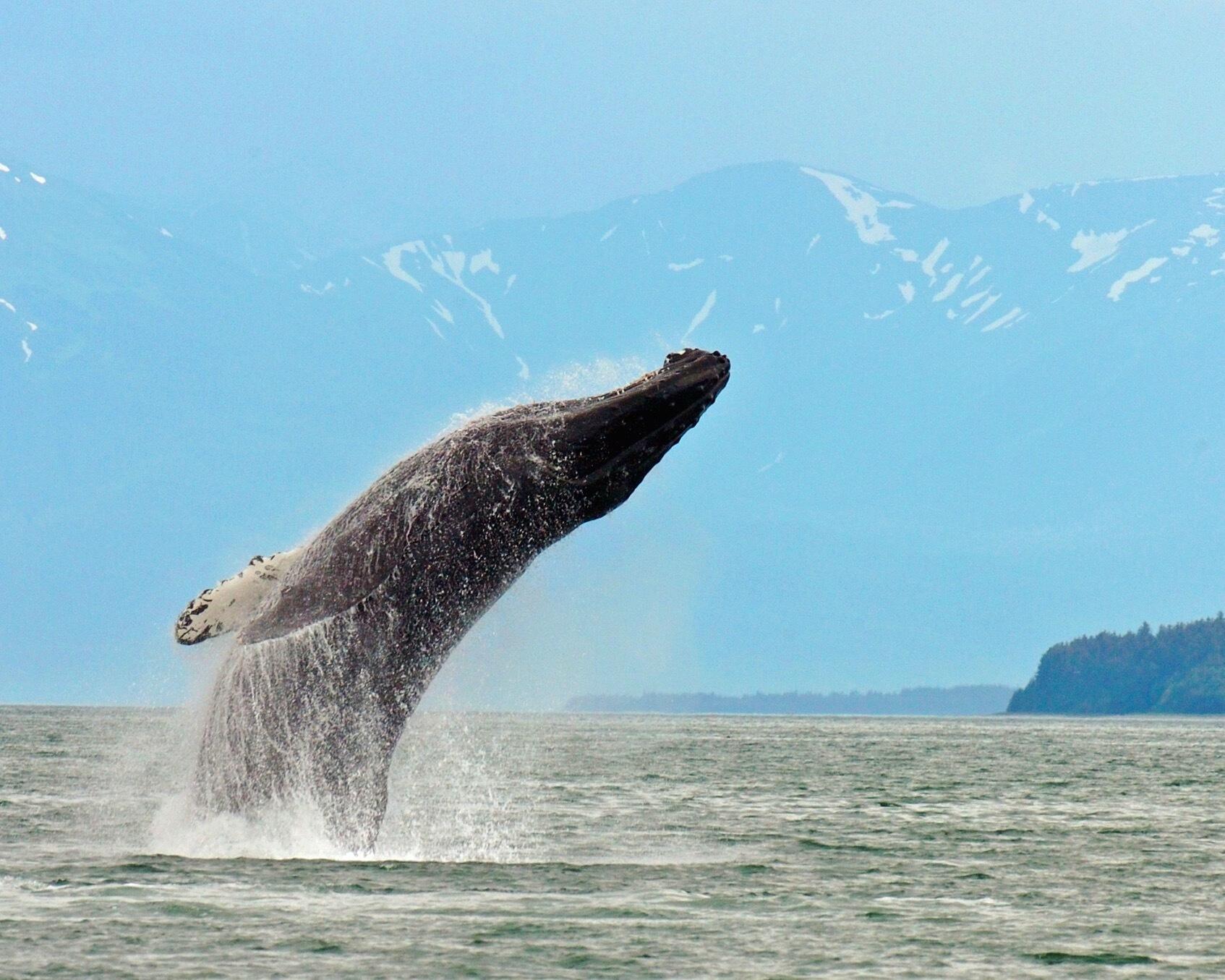Whale watching has evolved into a multi-million dollar industry in Alaska thanks to the unique experiences available to those who visit this fascinating country. Alaska is a haven for anglers, nature lovers, and those seeking family-friendly adventures, and one of the best places to see humpback whales in the wild.
The world’s largest mammals are naturally migratory, so you’ll find some seasons are better for whale watching than others. While Alaska offers land- and ocean-bound enjoyments year-round, the period between May and September is usually prime time for whale watching, with activity peaking in the summer.
Read to learn more about the best place to whale-watch in Alaska in late July.
Top Whale-Watching Spots During Late July in Alaska
Alaska offers many premium destinations for whale-watching in the summer. These include:
- Juneau
- Seward
- Kenai Fjords National Park
- Icy Strait Point
Of these, Juneau stands out as the place to be in late July.
Juneau in Late July: Whale Watching at Its Best
Juneau is a prime location for whale-watching and fishing charters thanks to its nutrient-rich water, which supports an abundant food supply for humpback whales, particularly in Favorite Channel and Saginaw Channel.
Here, deeper, nutrient-rich waters rise to the surface on tidal currents, bringing nutrients from the seafloor to the surface. This abundant food supply promotes the growth of phytoplankton and encourages phytoplankton blooms.
These blooms are a fantastic food source for small species of Alaskan marine life, like krill, herring, and capelin, which are preferred food sources for humpback whales. Additionally, the channels and diverse habitats surrounding Juneau allow the whales to access diverse feeding grounds and sheltered areas.
An abundance of whales, fish, and Alaska wildlife around Juneau makes it an attractive destination for tourists and cruise ships, so the city is well-equipped to cater to the needs of travelers of all ages.
How Does the Weather Impact Whale Watching?
While whales are active regardless of the weather, certain conditions ensure a more comfortable and enjoyable trip for visitors. In late July, specific weather conditions can significantly enhance the whale-watching experience.
Overall, mild, windless weather with minimal precipitation is optimal for whale watching. Calm seas and clear skies are ideal, as they improve visibility and make it easier to spot whales and enjoy breathtaking views in Alaska.
Overcast or rainy days can sometimes be beneficial, as whales may exhibit more surface activity during such weather.
Cloudy weather can positively impact whale-watching visibility. On overcast days, the absence of direct sunlight reduces glare on the water.
This can make it easier to spot whales, especially their blows or surface activity.
Low glare particularly benefits photographers, as the softer light conditions enhance visibility and detail.
The Best Time of Day for Whale Watching
Early morning and late afternoon are typically the best times for whale watching in Alaska in late July. At these times, calmer waters and optimal lighting conditions enhance visibility and increase the likelihood of spotting whales.
Morning tours often benefit from less boat traffic, while late afternoons can coincide with active feeding behaviors. Additionally, the extended daylight hours in Alaska during summer provide ample opportunities to maximize afternoon tours.
Whale Watching Highlights
During your whale-watching adventures in Alaska, you can expect to see a variety of species, including:
- Humpback whales
- Gray whales
- Minke whales
- Orcas
- Endangered fin whales.
You’ll also get to witness exhilarating aspects of whale behavior, like:
Bubble Net Feeding
Humpback whales are known for this complex feeding behavior. They create a ring of bubbles to corral fish and then swim up through the center to feed.
Lunge Feeding
The nutrient-rich waters of Juneau are ideal for fish and krill to thrive. Whales often lunge forward with their mouths open to feast on this bounty.
Grouping
Humpback whales are sociable and may gather in groups. They sometimes form large aggregations while feeding in food-rich areas.
Breaching
Whales occasionally breach by jumping out of the water and landing with a splash. This behavior is a form of play or communication.
Lobtailing
Slapping their tails on the water’s surface is another way whales communicate. This behavior is usually a sign of excitement or warning to other whales.
Spyhopping
Whales are curious and may poke their heads above the water to look around. This behavior can provide unique photographic opportunities.
July Travel Tips When Visiting Alaska
July is one of the best times to visit Alaska thanks to long daylight hours and mild weather. Pack for warm weather, but don’t forget your raincoat and waterproof gear for whale-watching trips.
Your tour operator can best advise you about what to wear on whale-watching tours during late July.
It’s also a good idea to bring a pair of sturdy hiking boots to make the most of hiking along Alaska’s lovely trails. You’ll enjoy more flexibility if you rent a car for your travels around Juneau.
This time of year is peak tourist season, so be sure to book your flights, accommodation, and activities as early as possible.
Alaska’s wildlife is a highlight of any stay, but you must practice responsible tourism by respecting the local creatures and following safety guidelines when viewing large animals.
Maximizing the Best Place to Whale-Watch in Alaska in Late July
Summer is the optimum time to enjoy whale-watching in Alaska, especially when you visit the best place to whale-watch in Alaska in late July. Juneau offers the best weather, thriving humpback whale populations, and experienced tour guides to help you make the most of your journey to Alaska.
The team at Adventure in Alaska is committed to showcasing the best whale-watching that Juneau has to offer under the guidance of Captain Alan Corbett, who has an abiding love for nature and over 20 years of boating experience in these waters.
Our boat, the Narwhal, is fully equipped for your enjoyment and regularly inspected by the USCG to ensure your safety. We invite you to share in the wonderful experiences we offer in Juneau.
Reach out to book the whale-watching or fishing adventure of a lifetime with us.

